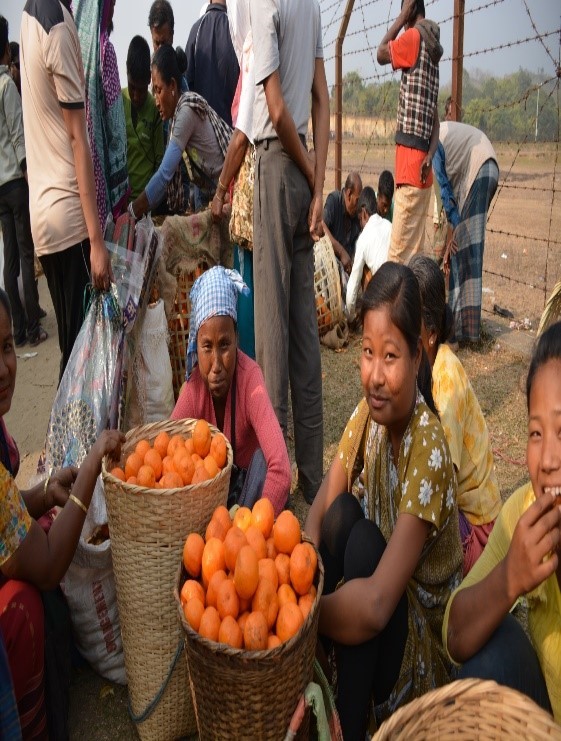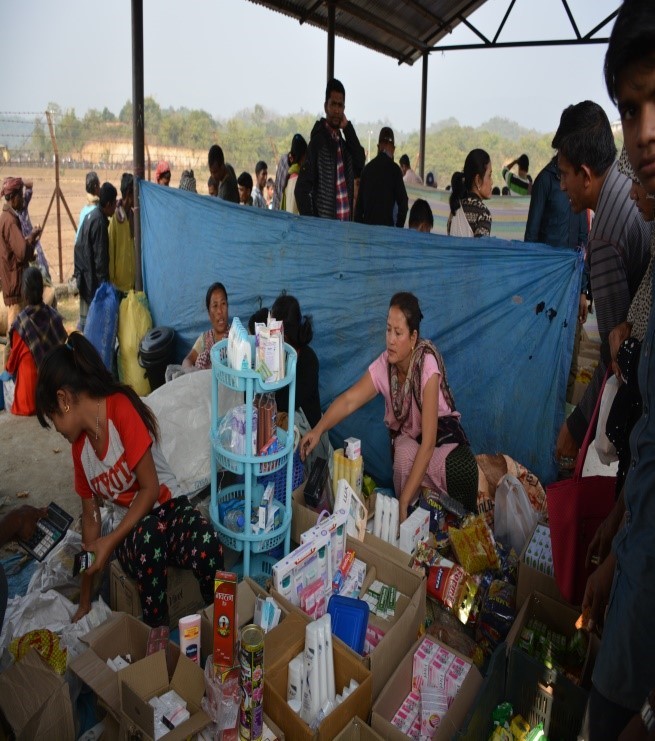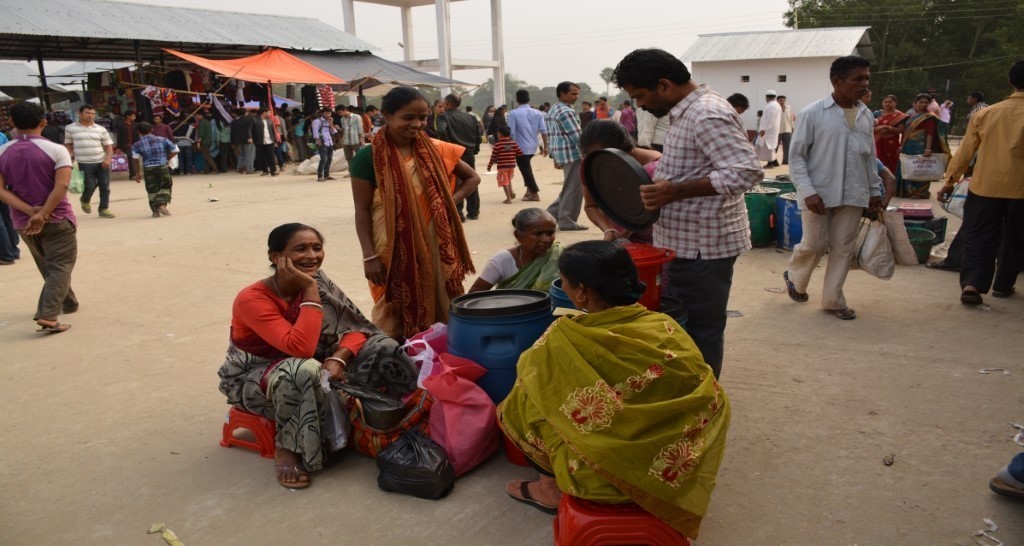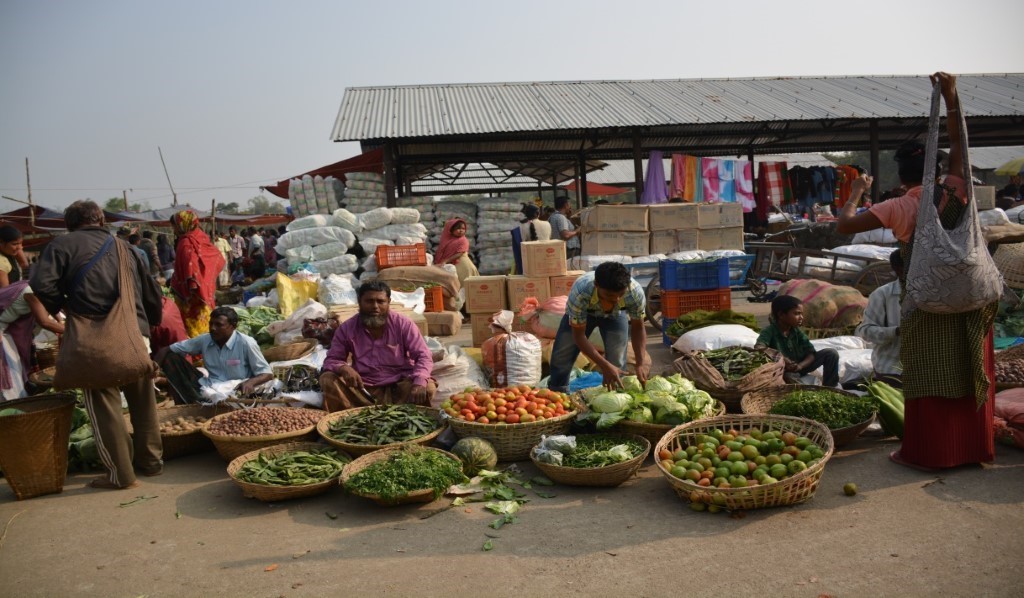 Border Haats as a Tool to Improve the Lives and Livelihood of People Residing in Remote Villages along the India-Bangladesh Border
Using evidence-based policy advocacy to guide informed policy decisions and improve quality of life in grass-roots communities
Border Haats as a Tool to Improve the Lives and Livelihood of People Residing in Remote Villages along the India-Bangladesh Border
Using evidence-based policy advocacy to guide informed policy decisions and improve quality of life in grass-roots communities

Challenges
The border haat initiative is a successful Government-to-Government initiative that transformed the lives of those residing in border villages. In 2010, the Governments of Bangladesh and India signed a comprehensive framework agreement covering a range of issues, one of which sought to promote cross-border trade and cooperation through the establishment of border haats. Between 2011 and 2015, four border haats were opened along India-Bangladesh border. These haats were successful in reducing informal trade between the two countries and creating livelihood opportunities that increased income and per capita spending on health care and education. While border haats helped to increase people-to-people connectivity and improved various socio-economic indicators, including the economic empowerment of women, there was insufficient awareness among policymakers, media and other stakeholders. As a result, efforts were needed to upscale the model.
Towards a Solution
The overall objective of the initiative was to document how border haats are benefiting and transforming the lives of people living in remote border areas. It sought to engage with relevant policymakers and non-State actors to advocate for opening additional border haats along the India-Bangladesh border, especially in north-east India. The initiative is contributing to Sustainable Development Goal (SDG) 1 on poverty, SDG 3 on good health and well-being, SDG 5 on gender equality, SDG 8 on decent work and economic growth and SDG 9 on industry, innovation and infrastructure.
The border haats allow people residing in remote border areas to market their local produce, mainly vegetables and fruits. Consumers then have access to essential commodities at cheaper prices than those found in markets in their home country, thereby allowing marginalized consumers to save a portion of their monthly income.
For example, the Balat border haat is located in the East Khasi Hills district in Meghalaya, India. Larger markets are all located at a distance: Shillong (100 km), Silchar (300 km) and Guwahati (200 km). These markets supply essential food grains, processed food items, medicines and consumer goods to nearby villages. However, owing to transportation costs, villagers living in remote border locations generally prefer to buy vegetables and other commodities at the border haat in Balat. According to one person surveyed, vegetables from Bangladesh cost less than half the price of Indian vegetables. In addition, fast moving consumer goods from Bangladesh, like fruit-based drinks, potato chips and biscuits, are also in high demand among Indian consumers. These goods are sold in large quantities but at a cheaper price. The border haat is therefore a boon for poor and marginalized communities, enabling them to access essential commodities at affordable prices.
For Bangladeshi residents, the Balat border haat facilitates access to items like Jeera (cumin seed) and luxury items like bedsheets, which are far cheaper on the Indian side of the border. For example, Jeera costs around 450 taka (around US$5.30) in Bangladesh, but consumers can buy it for 280 taka (around US$3.30) at the haat.
In terms of the methodology used, the Consumer Unity & Trust Society (CUTS International), with the support of the World Bank, undertook a bottom-up approach and evidence-based advocacy to propose opening more border haats. An extensive survey and a series of focus group discussions with grass-roots stakeholders were conducted to understand and document the impacts of the four operational border haats on local communities. The study found that border haats had a positive impact on the welfare of communities on both sides of the border in three definitive ways: creating livelihood opportunities, improving cross-border relations and reducing informal trade and illegal and subversive activities. Anecdotal evidence also points to the overall positive impact of border haats. For example, a vendor at the Srinagar haat in Tripura, India boosted his income by 9,500 rupees per month.
Across all locations, many participants at the haats use the additional income to increase spending on essential services, including health care for family members and education for children. In addition, by purchasing various consumer durables such as televisions and mobile Internet, villagers are able to afford a better quality of life for themselves and their families. The study also revealed the need to increase the participation of women in border haats.
The study was effective in demonstrating the need to establish more border haats to policymakers in both India and Bangladesh. As a result of the intervention, six new border haats were sanctioned in 20161. In addition, the memorandum of understanding (MoU) governing the establishment of the border haats was revised on 8 April 2017, taking into consideration the recommendations from the study. The validity period for the MoUs was also increased from three to five years. The number of vendors from each country was increased from 25 to 50, and buyers were allowed to buy produce worth US$200, which was increased from $100. The list of items sanctioned for trade at the border haats has also been expanded over time to meet local needs and conditions.
The Governments of both India and Bangladesh are currently considering additional border haats along the India-Bangladesh border. A list of 73 locations has been proposed by both the Border Security Force and state governments.
This innovative initiative has used both a quantitative and a qualitative approach to documenting evidence from the grass roots. Furthermore, the initiative captured verifiable anecdotal evidence. This approach has proven to be effective in creating trust and, most importantly, promoting political will. It has also cemented relations and good will among residents at the grass-roots level. The approach is sustainable and could be replicated to address a broad spectrum of cross-cutting issues.
Contact Information
Countries involved
Supported by
Implementing Entities
Project Status
Project Period
URL of the practice
Primary SDG
Secondary SDGs
Similar Solutions
| NAME OF SOLUTION | Countries | SDG | Project Status | |
|---|---|---|---|---|
360-Degree Awareness Tool to Fight COVID-19 Raising awareness and ensuring public wellbeing through a one-stop platform for fighting COVID-19 in Bangladesh |
Bangladesh, India | 16 - Peace and Justice Strong Institutions | Ongoing | View Details |
A-Card Initiative |
Bangladesh, India | 10 - Reduced Inequalities | Completed | View Details |
Accelerating Digital Transformation in All Ministries in Bangladesh Promoting the rapid design and implementation of plans to digitize all ministries and subordinate government institutions in Bangladesh |
Bangladesh, India | 10 - Reduced Inequalities | Ongoing | View Details |
Accelerating the Implementation of African Union Treaties in São Tomé and Príncipe South-South learning from the Beninese judicial system’s experience in the application of human rights treaties to its national law |
Bangladesh, India | 05 - Gender Equality | Completed | View Details |
Accelerating the Transformational Shift to a Low-Carbon Economy in Mauritius Towards supplying 35 percent of the country’s energy needs with renewables by 2025 |
Bangladesh, India | 05 - Gender Equality 09 - Industry, Innovation and Infrastructure 13 - Climate Action | Ongoing | View Details |



